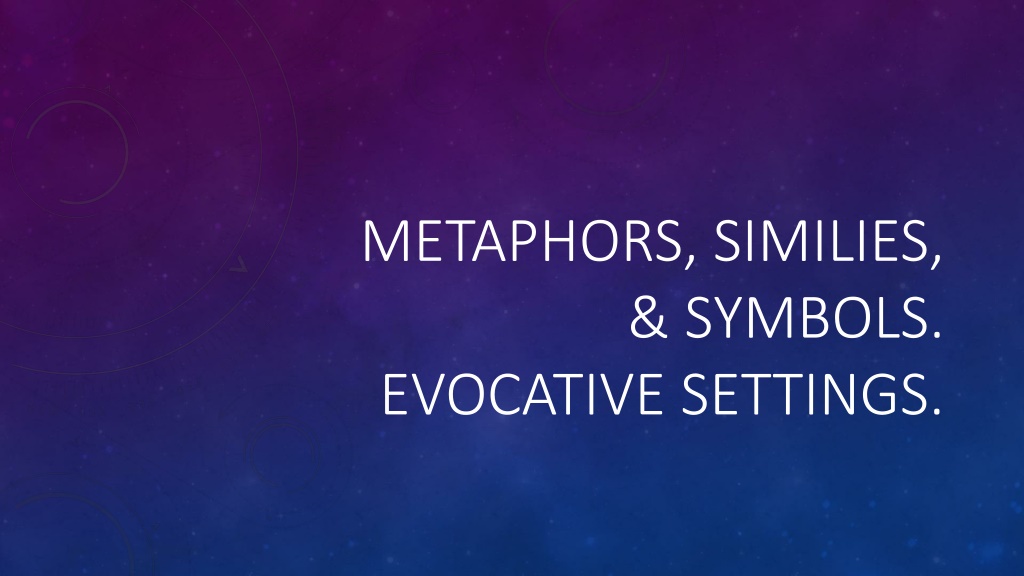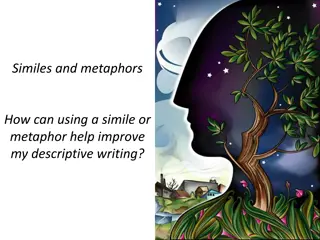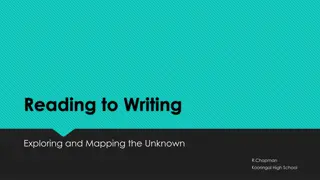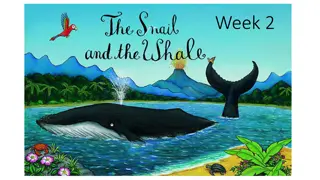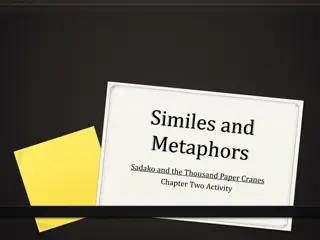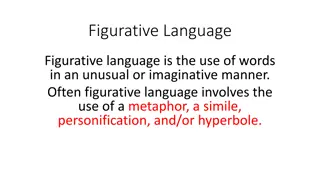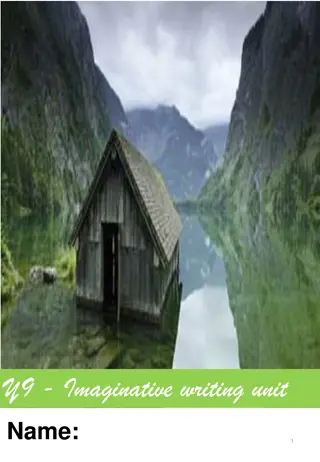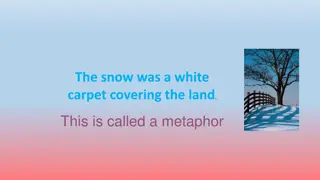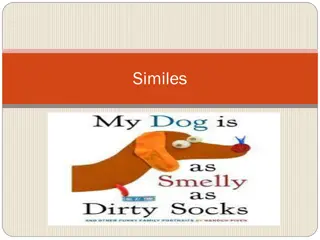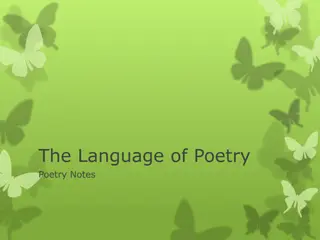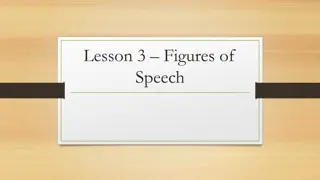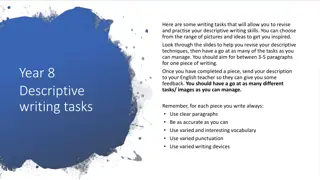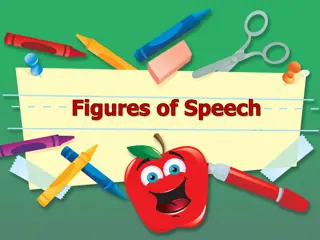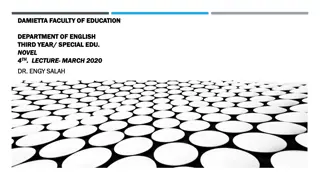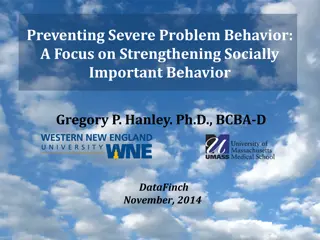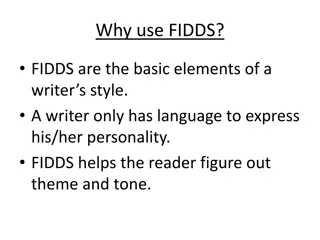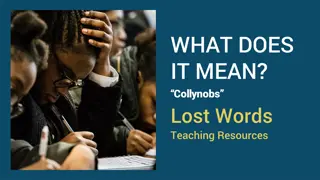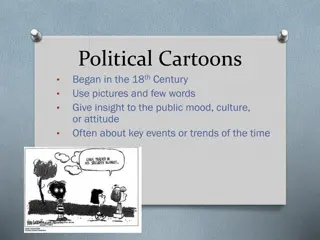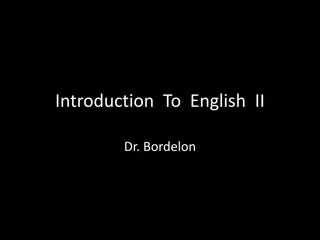Exploring Metaphors, Similes, Symbols, and Evocative Settings in Writing
Discover the nuances of metaphors, similes, symbols, and evocative settings in literature. Dive into the power of metaphor and how it enriches storytelling. Explore the importance of using these literary devices effectively to create captivating narratives. Uncover the significance of settings in shaping the mood and atmosphere of a story.
Download Presentation

Please find below an Image/Link to download the presentation.
The content on the website is provided AS IS for your information and personal use only. It may not be sold, licensed, or shared on other websites without obtaining consent from the author. Download presentation by click this link. If you encounter any issues during the download, it is possible that the publisher has removed the file from their server.
E N D
Presentation Transcript
METAPHORS, SIMILIES, & SYMBOLS. EVOCATIVE SETTINGS.
METAPHOR A metaphor, as Robert Frost explains it, is saying one thing in terms of another. Love is a rose. A simile is a metaphor where the comparison is explicitly stated using like or as. My love is like a rose. An extended metaphor is one that pervades a whole passage or poem. (See the poem comparing divorce to a slow dissolving.) The power of metaphor lies in the unstated connotations. If an author writes, The sun hangs like a bauble in the trees, what do you think we should infer about the sun?
We use metaphors all the time. The lion is the king of beasts. The eyes are windows to the soul. The gun barked. The ship ploughed the sea. How many metaphors can you spot in the passage below? Because, by definition, metaphor introduces an alien image into the flow of the story, metaphor is to some degree always self-conscious. Badly handled, it calls attention to the writer rather than the meaning and produces a hiccup in the reader s involvement. A good metaphor fits so neatly that it fuses to and illuminates the meaning
Try to avoid Metaphors that are shopworn. Keep your nose to the grindstone. March to the beat of a different drummer. Mixed metaphors, which compare your subject to different things, or different aspects of the same thing, some of which evoke the wrong connotation. As you walk the paths of life, don t founder on the reefs of ignorance. Your eyes are lakes, along whose edge a velvet green of scum sparkles Jamming in too many metaphors. Use metaphor sparingly, unless you re going for a comic effect.
OTHER KINDS OF COMPARISON A symbol represents something other than and more than itself, without resembling the thing. (E.g., the cross symbolizes redemption.) An allegory compares two different series of events, often to convey an idea or philosophy. (E.g., the story of the tortoise beating the hare conveys the idea that in the story of life, slow and steady wins the race.) An objective correlative tries to find external manifestations to evoke an inexpressible feeling.
SETTINGS Settings always reveal an attitude and produce an atmosphere. It was a dark and stormy night. What can you infer from these two different settings? 1. The bus to St. James s started its round at eight o clock in the morning, from a corner of Park Avenue in the Sixties. The earliness of the hour meant that some of the parents who took their children there were sleepy and still without coffee, but with a clear sky the light struck the city at an extreme angle, the air was fresh, and it was an exceptionally cheerful time of day. John Cheever
2. The sky was a dying violet and the houses stood out darkly against it, bulbous liver-colored monstrosities of a uniform ugliness though no two were alike .Each house had a narrow collar of dirt around it in which sat, usually, a grubby child. Flannery O Conner Settings can be symbolic like the sea in Moby Dick, or the forked path in Robert Frost s poem. Sometimes authors start with an insistent single attitude toward a setting, with the purpose of later deliberately contradicting it to surprise the reader. (E,g. the negative portrayal of India at the beginning of Forster s Passage to India is complicated when he starts exploring India s beauty and mystery.)
